Anterior Talofibular Ligament (ATFL)
Introduction
The Anterior Talofibular Ligament (ATFL) is a key ligament in the ankle, connecting the fibula to the talus. It is the most commonly injured ligament in ankle sprains, especially with inversion injuries. The ATFL helps stabilize the ankle by preventing excessive forward displacement of the talus.
The anterior talofibular ligament, situated on the lateral (outer) side of the ankle, prevents excessive inversion (rolling inward) of the foot. The two separate bands of this structure, the anterior and posterior fibers, cooperate to stabilize the ankle joint.
Structure of the anterior talofibular ligament
The talus bone in the foot and the fibula bone in the lower leg are joined by the anterior talofibular ligament (ATFL), a thin, fibrous band. It is situated on the outside of the ankle, or lateral side, and it keeps the foot from rolling inward too much.
The anterior and posterior fibers, two separate bands that make up the anterior talofibular ligament, cooperate to stabilize the ankle joint. The anterior fibers attach to the front of the talus bone and are thicker and shorter than the posterior fibers. The posterior fibers connect to the keep of the talus bone and are thinner and longer.
A larger network of ligaments, tendons, and muscles, including the anterior talofibular ligament, cooperate to support and stabilize the ankle joint. These include the peroneal tendons, the deltoid ligament, the posterior talofibular ligament, and the calcaneofibular ligament.
Attachment of the anterior talofibular ligament
The talus and fibula are the two lower leg and foot bones to which the anterior talofibular ligament (ATFL) is attached.
On the outside of the lower leg is a long, thin bone called the fibula. Just below the knee joint, at a location known as the lateral malleolus, the anterior talofibular ligament connects to the fibula. On the outside of the ankle, there is a bony protrusion called the lateral malleolus.
The talus is a tiny bone in the foot that sits between the calcaneus, the heel bone, and the tibia and fibula, the lower leg bones. The front of the talus, close to the ankle joint, is where the anterior talofibular ligament is attached.
The anterior and posterior fibers are the two separate bands that make up the anterior talofibular ligament. The anterior fibers attach to the front of the talus bone and are thicker and shorter than the posterior fibers. Attached to the keep of the talus bone, the posterior fibers are thinner and longer.
These fibers cooperate to stabilize the ankle joint, especially when the foot is inverted (rolls inward) during movement. The anterior talofibular ligament tightens when the foot rolls inward, assisting in limiting excessive movement that may cause injury.
Functions of the anterior talofibular ligament
To stabilize the ankle joint and limit excessive movement that can cause injury, the anterior talofibular ligament (ATFL) is essential. The anterior talofibular ligament serves the following specific purposes:
Provides lateral stability: The anterior talofibular ligament helps keep the foot from rolling inward, or inversion, by giving the ankle joint lateral stability. Because inversion injuries are among the most prevalent kinds of ankle injuries, particularly in sports involving jumping, cutting, or pivoting movements, this is crucial.
Restricts excessive plantarflexion: When the foot points downward, the anterior talofibular ligament also restricts excessive plantarflexion of the ankle joint. Because excessive plantarflexion can strain the Achilles tendon and cause injuries like Achilles tendinitis or ruptures, this is crucial.
Supports dorsiflexion: When the foot points upward, the anterior talofibular ligament also supports the ankle joint’s dorsiflexion. This is significant because many activities, including running, jumping, and walking, require dorsiflexion.
Prevents talus anterior displacement: When the talus moves too far forward, it may injure the ankle joint. The anterior talofibular ligament help in avoiding this. This is crucial because high-impact activities like jumping and landing from a jump can cause anterior displacement.
In general, the anterior talofibular ligament is a crucial ligament that helps in giving the ankle joint support and stability during a range of motions. Ankle injuries and instability would be more likely in the absence of the anterior talofibular ligament.
Blood supply of the anterior talofibular ligament
The blood supply to the anterior talofibular ligament (ATFL) comes from multiple sources. The perforating branch of the peroneal artery, which supplies blood to the lateral aspect of the ankle joint and runs along the lateral malleolus, is the most important source. The posterior tibial artery, which emerges from the popliteal artery in the thigh, includes the peroneal artery as a branch.
The anterior tibial artery, which runs along the front of the ankle joint, provides blood to the anterior talofibular ligament in addition to the perforating branch of the peroneal artery. The anterior tibial artery, which supplies blood to the anterior aspect of the ankle joint, is a branch of the popliteal artery.
The anterior talofibular ligament’s blood supply is crucial because it supports the ligament’s growth and helps in its recovery from injury. Avascular necrosis (death of tissue due to lack of blood supply) or delayed healing may result from injuries to the anterior talofibular ligament that affect its blood supply.
The anterior tibial artery and the perforating branch of the peroneal artery typically supply blood to the anterior talofibular ligament. Maintaining the ligament’s health and functionality depends on this blood supply.
Injuries of the anterior talofibular ligament
Numerous activities that involve sudden direction changes or impact on the ankle joint can cause injuries to the anterior talofibular ligament (ATFL). The following are a few typical activities that may injure the anterior talofibular ligament:
Sports: Ankle joint stress and the risk of anterior talofibular ligament injury are increased by sports that require jumping, running, cutting, or pivoting. Football, tennis, volleyball, basketball, and soccer are a few examples.
Uneven surfaces: The ankle may twist or roll when walking or running on uneven surfaces, such as rocky terrain or unstable ground, which can result in an anterior talofibular ligament injury.
High heels: Wearing shoes with high heels can cause the foot and ankle to shift in weight, which increases the risk of anterior talofibular ligament injury and ankle sprains.
Falls: Ankle twisting or rolling due to a fall from a height or tripping over an object can result in anterior talofibular ligament injury.
Overuse: The ankle joint may be strained by repetitive activities like running or jumping, which can result in overuse injuries like anterior talofibular ligament tears or strains.
Ultimately, the anterior talofibular ligament may sustain injury from any activity that involves rapid direction changes or affects the ankle joint. To lower the risk of injury during these activities, it’s critical to wear the right footwear and take the right precautions.
Symptoms of the anterior talofibular ligament
The ligament that joins the talus and fibula bones on the outside of the ankle is called the anterior talofibular ligament (ATFL). It is responsible for keeping the ankle joint stable while moving. An injury to the anterior talofibular ligament can result in several symptoms, such as:
Ankle pain is the most typical sign of an anterior talofibular ligament injury. The lateral side of the ankle may experience dull or sharp pain.
Swelling: Ankle joint swelling may result from injury to the anterior talofibular ligament. Depending on the severity of the injury, the swelling could be minor or severe.
Bruising: Ankle joint bruising may occasionally result from injury to the anterior talofibular ligament. It could take a few days for the bruises to appear, and they could be minor or severe.
Stability: The ankle joint may become unstable due to injury to the anterior talofibular ligament. This suggests that walking or standing may be difficult due to a weak or unstable ankle.
Limited range of motion: An ankle joint’s limited range of motion may also result from injury to the anterior talofibular ligament. This means that moving the ankle side to side or up and down could be difficult.
Having trouble bearing weight: In severe cases, a rupture of the anterior talofibular ligament may make it hard to put weight on the injured foot. Crutches or other assistive devices may be required after the injury heals.
It’s critical that you seek medical attention from a healthcare provider right away if you experience any of these symptoms.
Diagnosis of the anterior talofibular ligament
The ligament that joins the talus and fibula bones on the outside of the ankle joint is called the anterior talofibular ligament (ATFL). Ankle joint stability and limiting excessive movement are crucial functions of the anterior talofibular ligament, especially when twisting or turning the foot.
A sudden twisting or rolling of the ankle, as in a sports injury or a fall, can cause injury to the anterior talofibular ligament. Pain, swelling, bruising, and trouble bearing weight on the injured ankle are all signs of an anterior talofibular ligament injury.
The anterior drawer test is one of the physical examinations that a medical professional will usually conduct to diagnose an anterior talofibular ligament injury. To evaluate the anterior talofibular ligament’s integrity, the medical practitioner will pull the foot in their direction while applying a forward force to the heel.
To confirm the diagnosis and assess the severity of the injury, additional diagnostic procedures like MRI or ultrasound may be used. The ankle joint’s soft tissue structures can be seen in great detail on an MRI, and the ligaments and tendons can be seen in real-time on an ultrasound.
For anterior talofibular ligament injuries, physical therapy, ice, compression, and rest may be used to help strengthen the muscles surrounding the ankle joint, increase range of motion, and lessen pain and swelling. Surgery might be required in severe situations to rebuild or repair the ligament injury.
In general, proper diagnosis and treatment of anterior talofibular ligament injuries are essential to prevent long-term problems and restore ankle joint function.
Treatment of the anterior talofibular ligament
The anterior drawer test
A physical examination method called the anterior drawer test is used to evaluate the integrity of the ankle joint’s anterior talofibular ligament (ATFL). The patient lies on their back during the test, with their foot resting on the examination table and their knee bent. The examiner then holds the heel in one hand while stabilizing the lower leg with the other.
The examiner pulls the foot in their direction while applying a forward force to the heel to conduct the test. The ankle’s movement during an anterior talofibular ligament sprain or injury is simulated by this motion. The talus bone in the ankle joint should move very little if the anterior talofibular ligament is unbroken.
A partial or total tear of the anterior talofibular ligament may be shown if the talus bone moves significantly. It is possible to assess the degree of movement during the test to determine the severity of the injury.
To ensure accuracy and stop more injuries, a qualified healthcare professional should conduct the anterior drawer test, which is a helpful diagnostic tool for evaluating anterior talofibular ligament injuries. The diagnosis and the severity of the injury may also be confirmed by additional tests, such as an MRI or ultrasound. Injuries to the anterior talofibular ligament can be treated with rest, ice, compression, and physical therapy; in severe cases, surgery might be required.
Conservative treatment
Non-surgical techniques are used in the conservative treatment of anterior talofibular ligament (ATFL) injuries to lessen pain and swelling and enhance ankle joint function. Conservative treatment options for anterior talofibular ligament injuries include the following:
Rest: To stop additional harm and encourage healing, the injured ankle must be rested. Activities that put stress or pain on the ankle joint should be avoided.
Ice: Applying ice to an injured ankle can help to reduce pain and swelling. Applying ice should be done several times a day for 15 to 20 minutes at a time.
Compression: Ankle joint support and edema reduction can be achieved with compression bandages or wraps. The bandage should not be wrapped too tightly because this may prevent blood flow.
Elevation: Raising the injured ankle above the level of the heart can help improve blood flow to the area and lessen swelling.
Physical therapy: To increase ankle joint mobility and lessen pain, a physical therapist can create an exercise regimen that incorporates strengthening and stretching exercises. By enhancing stability and balance, physiotherapy treatments can also lower the risk of injuries.
Medication: Acetaminophen and ibuprofen are examples of over-the-counter pain relievers that can help reduce pain and inflammation.
Bracing: Putting on an ankle brace or support can help stabilize the ankle joint and stop further injury.
Depending on the severity of the injury, conservative treatment for anterior talofibular ligament injuries usually lasts for a few weeks or months. To ensure proper healing and avoid long-term complications, it’s critical to adhere to the healthcare provider’s instructions and show up for all planned appointments.
Physiotherapy treatment
An essential component of the conservative management of anterior talofibular ligament injuries is physical therapy. A customized exercise regimen can be created by a physical therapist to help decrease pain and increase ankle joint mobility. Physiotherapy treatments for anterior talofibular ligament injuries include the following:
Exercises for range of motion: These exercises increase flexibility and mobility by putting the ankle joint through a full range of motion. To help stretch the ankle joint, the physical therapist might use manual techniques or equipment like resistance bands.
Strengthening exercises: By strengthening the muscles surrounding the ankle joint, these exercises can help the joint become more stable and supported. To add resistance to these exercises, the physical therapist might use weights, resistance bands, or other equipment.
Training for balance and proprioception: By enhancing coordination and balance, these exercises can lower the risk of further injuries. The physical therapist may challenge the ankle joint and enhance proprioception with methods like foam pads or balance boards.
Gait training: Gait training involves analyzing a person’s gait to find any imbalances or variations that might be causing the injury. To improve gait, the physical therapist might recommend exercises and advise on proper walking techniques.
Manual therapy: Manual therapy methods like joint mobilization, manipulation, and massage can help relax pain and increase joint mobility.
Modalities: To lessen pain and inflammation, techniques like electrical stimulation, ultrasound, and cold therapy may be used.
For anterior talofibular ligament injuries, the length of physiotherapy treatment varies based on the severity of the injury and the patient’s response to treatment. Following the physical therapist’s advice and showing up for all of your appointments is essential to ensuring proper healing and avoiding long-term injury complications.
Risk factors of the anterior talofibular ligament
One of the ankle’s most usually injured ligaments is the anterior talofibular ligament (ATFL). The following risk factors can raise the possibility of an anterior talofibular ligament injury:
Ankle instability: The anterior talofibular ligament is more likely to be injured in people who have a history of ankle sprains or instability. This is due to the fact that prior injuries can weaken the ligament and increase the risk of further injuries.
Participation in sports: Anterior talofibular ligament injuries are more common in athletes who play sports requiring jumping, cutting, or pivoting motions. These sports include basketball, soccer, volleyball, and football.
Footwear: Ankle injuries, including anterior talofibular ligament injuries, can be more likely to occur when wearing shoes with worn-out soles or weak support.
Ankle range of motion: People who have stiffness in their ankle joint or restricted ankle range of motion are more likely to sustain injuries to the anterior talofibular ligament. This is because a restricted range of motion may cause the ligament to be overstressed when moving.
Ankle joint instability and the risk of anterior talofibular ligament injuries can be caused by weakness in the muscles surrounding the ankle joint.
Body weight: Being obese or overweight raises the risk of anterior talofibular ligament injuries and puts more strain on the ankle joint.
Age: Due to age-related changes in the ligament and a decrease in muscle strength and flexibility, older people may be more at risk for anterior talofibular ligament injuries.
Gender: Because of anatomical and hormonal differences, women are more likely than men to sustain anterior talofibular ligament injuries.
Understanding these risk factors and taking precautions to lower the likelihood of anterior talofibular ligament injuries—such as wearing suitable footwear, keeping your ankles strong and flexible, and playing sports with the right form and conditioning—are vital.
How to avoid anterior talofibular ligament injuries
There are multiple steps involved in preventing anterior talofibular ligament injuries, including:
Strength training: By strengthening the muscles that surround the ankle joint regularly, one can increase stability and lower their risk of anterior talofibular ligament injuries. These workouts may involve resistance band exercises, ankle circles, and calf raises.
Stretching: Ankle joint muscles can be stretched to increase flexibility and lower the risk of anterior talofibular ligament injuries. Ankle dorsiflexion stretches, heel drops and calf stretches are examples of stretching exercises.
Proper footwear: Anterior talofibular ligament injuries can be prevented by wearing shoes that provide enough arch support and cushioning. To avoid falls and slips, shoes should fit properly and have a non-slip sole.
Taping or bracing: During physical activity, applying tape or wearing an ankle brace can help give the ankle joint more stability and support.
Technique: When performing physical activities or sports, using suitable methods can help lower the risk of anterior talofibular ligament injuries. This involves avoiding sudden direction changes and using proper technique when leaping, cutting, or pivoting.
Gradual progression: Overuse injuries, such as anterior talofibular ligament injuries, can be avoided by progressively increasing the duration and strength of physical activity.
Rest and healing: By giving the body time to heal and restore itself following physical activity, recovery and rest can help avoid injuries.
People can lower their risk of anterior talofibular ligament injuries and keep up an active and healthy lifestyle by doing these things. To make a full recovery, it is crucial to seek medical attention and follow a suitable rehabilitation program if an injury does occur.
FAQs
What is the anterior ligament of the talofibular joint?
The ligament that joins the talus bone in the foot to the fibula bone in the lower leg is called the anterior talofibular ligament (ATFL). It is among the ankle ligaments that sustain injuries the most often.
What features does the anterior talofibular ligament have?
The ankle joint is stabilized by the anterior talofibular ligament, which stops the foot from rolling inward too much.
What causes injury to the anterior talofibular ligament?
There are several ways to injure the anterior talofibular ligament, such as rolling or twisting the ankle, landing awkwardly after a jump, or stepping on an uneven surface. Injuries from sports like basketball, soccer, and volleyball are frequent.
What symptoms show an injury to the anterior talofibular ligament?
An anterior talofibular ligament injury can cause pain, bruising, swelling, and trouble bearing weight on the injured foot. It is also possible for the ankle to feel unsteady or to slip easily.
How can an injury to the anterior talofibular ligament be identified?
A physical examination and imaging tests like MRIs or X-rays are usually used to diagnose anterior talofibular ligament injuries.
How is an anterior talofibular ligament injury treated?
The severity of an anterior talofibular ligament injury determines how it should be treated. Compression, elevation (RICE), rest, ice, and physical therapy can all help heal minor injuries. In certain situations, more serious injuries might require surgery as well as immobilization in a cast or brace.
Is it possible to avoid an anterior talofibular ligament injury?
Avoiding activities that place too much stress on the ankle joint, doing ankle-strengthening exercises, and wearing appropriate footwear during physical activity can all help prevent an anterior talofibular ligament injury.
References
- Patel, D. (2023f, August 18). Anterior talofibular ligament – Anatomy, structure, function. Samarpan Physiotherapy Clinic. https://samarpanphysioclinic.com/anterior-talofibular-ligament/

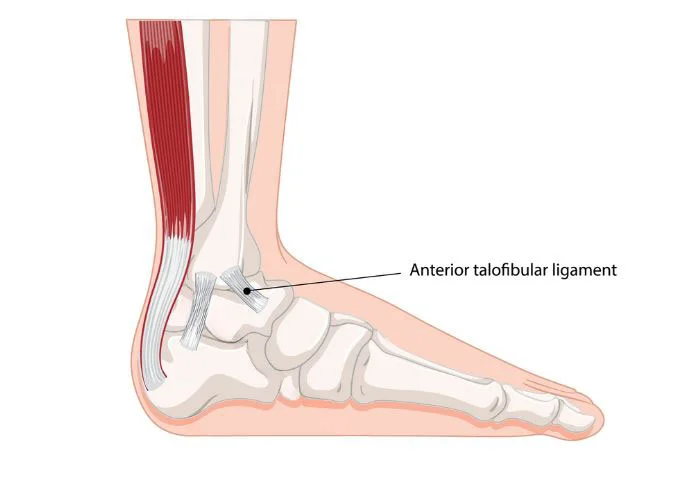
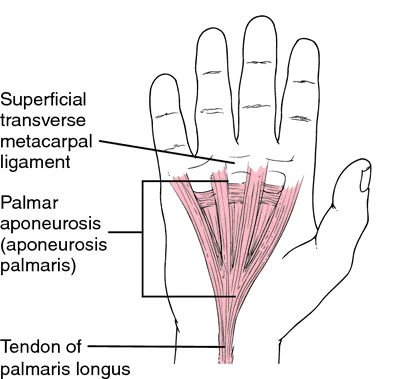
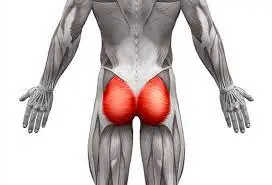


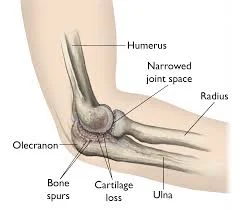
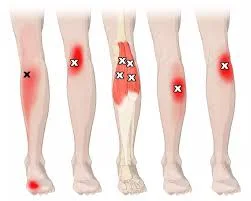
2 Comments